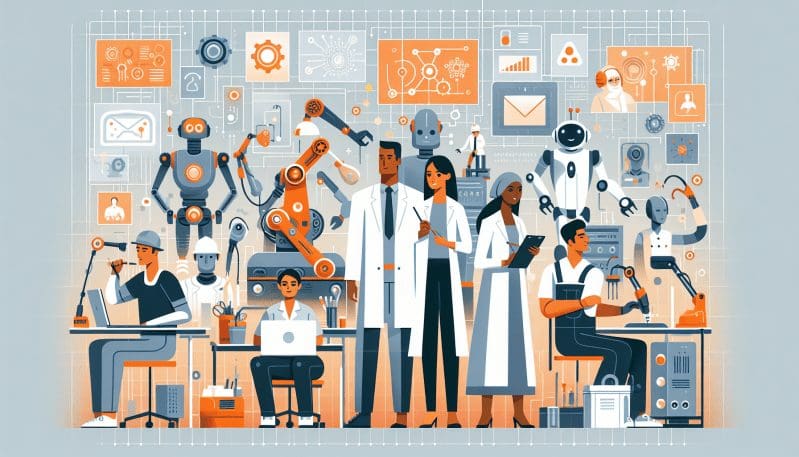Embracing Resilience in the Automation Era: Strategies to Future-Proof Our Workforce
- Home
- Embracing Resilience in the Automation Era: Strategies to Future-Proof Our Workforce
- Editors Desk
- March 22, 2024
- 0 Comments
As we stand on the cusp of widespread automation, artificial intelligence, and technological disruption, the fear of job displacement looms large for many workers. Yet, it’s essential to recognize that with change comes opportunity – an opportunity for growth, adaptation, and unprecedented advancement in how we approach our work lives.
The question is, how do we transition from an era of potential job loss to one of job evolution? The answer lies in the core of your company’s values: No Worker Left Behind. A commitment to this philosophy means acknowledging the power of continuous learning and development as the bedrock of workforce resilience.
Investing in Continuous Learning
Investment in continuous learning and development programs is critical for harnessing the potential of employees. Innovative companies around the globe are redesigning their educational programs, understanding that the skills needed yesterday will not suffice tomorrow. Lifelong learning must become embedded in our work culture, with employers leading the charge by offering courses, workshops, and opportunities that target the emerging skills of tomorrow.
Cultivating Cross-Disciplinary Skillsets
Cross-disciplinary skillsets are becoming increasingly valuable as the boundaries between job roles blur. Professionals who can bridge the gap between disciplines bring a level of versatility and problem-solving prowess that single-track expertise cannot. Companies need to encourage their employees to expand their knowledge beyond their core competencies, fostering a culture where learning coding, digital marketing, or design thinking is as valued as domain-specific knowledge.
Adaptable Corporate Cultures
Creating a culture of adaptability is paramount. This means shifting from a fixed mindset to a growth mindset, where change is not only expected but embraced. Encourage experimentation, celebrate calculated risks, and view failures as a necessary step in the learning process. When workers feel supported in their endeavors to grow, they are more likely to proactively seek out the skills that will future-proof their careers.
Success Stories of Transition
Several organizations stand as beacons of success in managing technological transitions for their workforce. For instance, AT&T’s multi-year initiative to retrain its workforce is a testament to the power of a company’s commitment to its employees’ growth. Another example is Siemens, which has long invested in apprenticeship programs that combine traditional education with hands-on learning, ensuring that their workforce evolves with the technologies they implement.
Actionable Strategies for Businesses
To ensure no worker is left behind, businesses can adopt several actionable strategies:
– Skill Audits : Regular assessments can help identify skill gaps and target training more effectively.
– Personalized Learning Paths : Tailor learning experiences to individual career aspirations and current job demands.
– Mentorship Programs : Pairing experienced workers with newcomers can facilitate the exchange of skills and institutional knowledge.
– Rewarding Lifelong Learning : Establish incentives that motivate employees to engage in continuous education.
– Collaborative Environments : Foster teamwork and communication across different departments to drive innovation and knowledge transfer.
In conclusion, the automation era doesn’t have to signify the end of robust employment; instead, it can herald the beginning of a more dynamic, skilled, and resilient workforce. By adopting a philosophy where no worker is left behind, companies can thrive in this new landscape and ensure their employees do as well. Prepare, adapt, and lead by example – the future of work depends on it.

